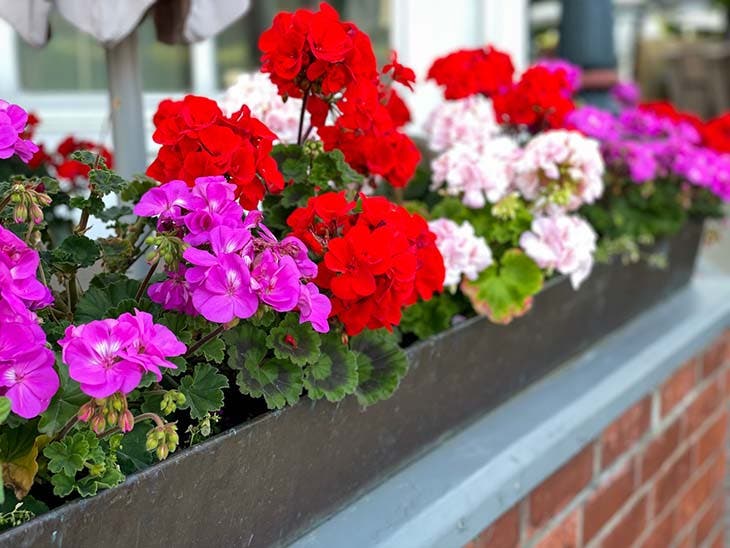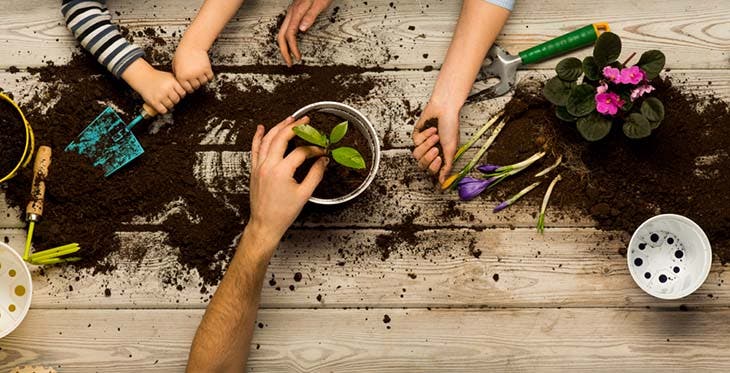
Which rustic plant do you most often see decorating the balconies of houses during the warm period? Without a doubt the geranium! Protagonist of the summer season, it proudly stands out with its sublime, abundant and colorful flowers, which bloom from spring and last until the end of summer. Impossible to go unnoticed, geraniums give a wonderful lush character to our environment. Much loved and coveted by all, the geranium is the ideal plant for coloring terraces and flower boxes. Ranging from red to blue, passing through pink and mauve, its color palette brings a real touch of freshness and joy into the home.
With its slightly rounded leaves and unique prestige, this plant is very easy to grow. Geranium loves sun, prefers rich soil or well-drained potting soil and needs some water. But did you know that it is possible to multiply it infinitely by simple cuttings? You will be able to reproduce all your favorite species from cuttings of existing plants. As a bonus, you don’t need to have a green thumb to succeed at this task. Quickly learn how to do it by following these quick and easy techniques.

How to grow new geraniums?
For this cut you will need a few tools: a very sharp and above all perfectly disinfected pruner, peat pots, a fertilizer specially dedicated to geraniums (or a homemade mixture of sand, peat and compost).
Here are the steps to propagate geraniums at home :
1. Make a cut
- The first thing to do is choose a branch of the mother plant and cut it: this is called a cutting, that is, a stem from which a new plant can grow.
- Of course, you shouldn’t choose randomly! Always choose a healthy, young and healthy stem. Its color should still be greenish. Its size should be approximately 10-15 cm in length and it should have at least 5 leaves.
- Use the pruner and cut the stem above a node (this is where a new branch or leaf grows). It also prefers branches that have not yet flowered and which tend to take root more easily.
- After cutting the branch, remove the lower leaves (keep the upper ones) and the buds lying on the stem.
- Place the cutting in a glass of water for a while.
2. Prepare the jars
Choose medium-sized terracotta pots and fill them with a mixture of equal parts of peat, soil and sand: these are the essential elements to make the soil well draining and well packed.
Make a hole in the center of the pot to insert the cutting. If you want to have very abundant geraniums, plant several cuttings in the same pot: if it is large enough, plant a maximum of 3 cuttings. However, it is not recommended to plant too many in the same pot, because the geraniums could suffocate each other during growth.
Note: If you have any doubts or growing problems, it is best to seek professional help.
3. Take care of yourself
Water the soil well and make sure it never dries out completely . Next, place your geraniums in a very bright place, but not in direct sunlight. Make sure to always keep the soil moist, without overwatering.
After about 2 weeks, the cuttings should already have developed their first roots. Little by little you will see new geranium plants appear.
4. Repot the plant
If you only planted one cutting per pot, you can save it until it grows big enough to transport. However, when you have planted multiple cuttings in the same pot, repotting may quickly become necessary. Therefore choose a larger pot, preferably terracotta and with drainage holes.
As for the soil, opt for a universal soil or a specific soil for geraniums, placing a layer of expanded clay or gravel on the bottom.
At this point your new geranium plant is ready: take special care of it to benefit from abundant flowering.

When is the best time to propagate geraniums?
Not all times of the year are necessarily good times to try to propagate geraniums. The best time is early spring, when gradually rising temperatures coincide with root development and cutting growth.
In fact, this plant can also multiply during the hot months, especially in summer, although it is advisable to avoid the period in which temperatures hover around 30°C. On the other hand, it is best not to waste time trying to grow geraniums during the cold season. In winter, due to low temperatures , propagation attempts are almost never successful